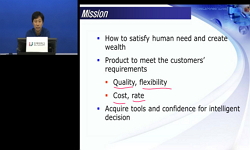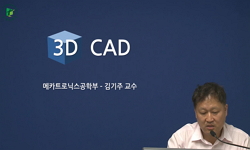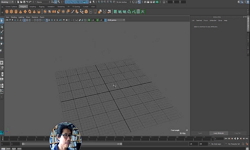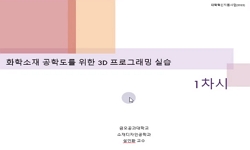벤처기업에 관한 기존의 연구들은 자원을 획득하고 보유자원을 재조합하여 내부역량을 확보하기 위한 방법에 논의에 집중되었다. 하지만 자원과 역량이 부족한 벤처기업에게 중요한 것은 ...
http://chineseinput.net/에서 pinyin(병음)방식으로 중국어를 변환할 수 있습니다.
변환된 중국어를 복사하여 사용하시면 됩니다.
- 中文 을 입력하시려면 zhongwen을 입력하시고 space를누르시면됩니다.
- 北京 을 입력하시려면 beijing을 입력하시고 space를 누르시면 됩니다.

지배적 디자인 경쟁 환경에서 벤처기업의 업종별 기회포착 전략에 관한 연구: 하드웨어와 소프트웨어 산업 비교를 중심으로 = Opportunity Capturing Strategy of Venture Company in the Context of Dominant Design Competition: focused on compare with hardware and software industry
한글로보기https://www.riss.kr/link?id=A101194883
-
저자
문지용 (서울과학종합대학원대학교) ; 고영희 (서울과학종합대학원대학교) ; Moon, Ji-Yong ; Ko, Young-Hee

- 발행기관
- 학술지명
- 권호사항
-
발행연도
2015
-
작성언어
Korean
- 주제어
-
등재정보
KCI등재
-
자료형태
학술저널
-
수록면
27-42(16쪽)
-
KCI 피인용횟수
1
- DOI식별코드
- 제공처
-
0
상세조회 -
0
다운로드
부가정보
국문 초록 (Abstract)
벤처기업에 관한 기존의 연구들은 자원을 획득하고 보유자원을 재조합하여 내부역량을 확보하기 위한 방법에 논의에 집중되었다. 하지만 자원과 역량이 부족한 벤처기업에게 중요한 것은 환경변화의 이해를 통해 기회를 포착하고, 생존할 수 있도록 안정적인 시장진입을 가능하게 하는 전략제시가 필요하다. 이를 위해, 본 연구는 벤처기업이 지배적 디자인 경쟁 환경의 산업에 진입하여 성공할 수 있었던 이유를 기회포착이라는 개념을 통해 알아보고자 한다. 기회포착은 벤처기업이 구현할 수 있는 역량을 고려하여 기회를 인식하는 것으로서 시장에 판매할 수 있는 재화 및 서비스를 공급하기 위해 필요한 기술을 선택하고, 기술획득에 필요한 협력방식을 선택하는 역량을 의미한다. 본 연구는 벤처기업의 기회인식과 전략적 대응방식에 주목하여 시장진입에 성공할 수 있었던 이유를 살펴보기 위해 지배적 디자인 경쟁이 진행되었던 산업에 진입하여 안정적으로 자리를 잡은 하드웨어 분야와 소프트웨어 분야 벤처기업 1곳 씩 선정하여 성공적인 진입이 가능했던 이유와 업종별 특성에 따른 차이점을 알아보았다. 연구결과 지배적 디자인 경쟁이 벌어지고 있는 환경에서 각 기술진영의 업체들은 자신의 기술이 확대되어 표준화가 되는 것이 목적이기 때문에 하드웨어 업체는 가격인하를 통한 시장 확대에 집중하였으며, 소프트웨어 업체는 보완기술의 보편화를 이루어 더 많은 사용자가 참여할 수 있게 유도하는데 노력한다. 지배적 디자인 경쟁환경은 벤처기업의 업종에 따라 기회포착 인식의 차이를 갖게 하는데 하드웨어 업체는 잠재수익률에 대한 기회인식의 차이로 인해 발생하는 틈새시장을 확보하도록 핵심기술을 확보하는 것이 중요하며, 소프트웨어 업체는 다수의 사용자가 참여하도록 유도하는 보완기술에 기회를 인식해야 함을 알 수 있었다.
다국어 초록 (Multilingual Abstract)
The aim of this research is to investigate the difference in the capturing opportunities for each type of venture companies in the industry undergoing competition of a dominant design and then figure out the reason why they can be successful. Existing...
The aim of this research is to investigate the difference in the capturing opportunities for each type of venture companies in the industry undergoing competition of a dominant design and then figure out the reason why they can be successful. Existing studies on venture companies are focused on the way to enhance a firm's competencies by acquiring and combining its resources. However, it is important for startups which have a lack of resources and capabilities to capture the opportunity to survive by understanding a changing environment. This study is focused on opportunity capture and strategic response to a changing environment and attempts to select and observe startup companies which are able to capture the opportunity and enter the market in the industry undergoing dominant design competition. In order to find out its difference in different types of business, we select one case from hardware startups and the other from software startups. According to the result of this study, the hardware startup focuses on market extension by lowering their prices and the software startup strives to induce more users to participate by the universalization of enabling technology so as to extend and standardize their technology in the environment undergoing dominant design competition. This feature of environment leads the difference in the approach for successfully capturing opportunity and thus hardware firms need to recognize the opportunity with profit potential from relationship with a number of cooperative firms while software firms need to identify the opportunity for extension of enabling technology which can be used by many users.
참고문헌 (Reference)
1 박성근, "중소기업에서 기술협력, 전유수단과 지식일출이 기술혁신 성과에 미치는 영향: 특허의 조절효과를 중심으로" 한국경영학회 43 (43): 95-120, 2014
2 경종수, "이동통신시장의 주요통계지표를 이용한 산업수명주기 유형화에 관한 연구" 한국조사연구학회 7 (7): 55-84, 2006
3 이수, "와해성 혁신과정에서 핵심기술과 비즈니스 모델간의 관계와 보완기술의 중요성 분석: 인터넷 쇼핑몰 사례를 중심으로" 기술경영경제학회 19 (19): 79-110, 2011
4 김종선, "선도 기술벤처기업의 비즈니스모델 실행이 창업기업에 주는 시사점 : 코스닥상장기업의 사례분석 중심으로" 한국벤처창업학회 9 (9): 23-33, 2014
5 유재홍, "산업진화단계와 동태적역량에 따른 제품혁신 전략의 변화: 한국 무선인터넷 산업을 중심으로" 기술경영경제학회 18 (18): 253-288, 2010
6 조남신, "벤처기업의 네트워크 효과, 선점전략, 조직역량 및 성과에 관한 연구" 한국전략경영학회 6 (6): 1-, 2003
7 문지용, "미래나노텍(주)의 혁신기반 환경대응을 통한 기술사업화 성공전략" 한국경영학회 19 (19): 121-156, 2015
8 이수, "디스플레이 시장에서 기술특성이 지배적 디자인 결정에 미치는 영향에 관한 연구: LCD와 PDP기술 경쟁을 중심으로" 한국경영학회 41 (41): 279-309, 2012
9 윤현중, "기업가적 지향성의 성과 효과 재검토 : 중소 벤처기업을 대상으로" 한국벤처창업학회 9 (9): 103-114, 2014
10 김환진, "기술제휴의 동기가 하이테크(High-Tech) 기업의 기술제휴 파트너 선정기준, 거버넌스 및 성과에 미치는 영향에 관한 연구: 거래비용이론과 자원준거이론의 통합적 관점을 중심으로" 기술경영경제학회 21 (21): 225-254, 2013
1 박성근, "중소기업에서 기술협력, 전유수단과 지식일출이 기술혁신 성과에 미치는 영향: 특허의 조절효과를 중심으로" 한국경영학회 43 (43): 95-120, 2014
2 경종수, "이동통신시장의 주요통계지표를 이용한 산업수명주기 유형화에 관한 연구" 한국조사연구학회 7 (7): 55-84, 2006
3 이수, "와해성 혁신과정에서 핵심기술과 비즈니스 모델간의 관계와 보완기술의 중요성 분석: 인터넷 쇼핑몰 사례를 중심으로" 기술경영경제학회 19 (19): 79-110, 2011
4 김종선, "선도 기술벤처기업의 비즈니스모델 실행이 창업기업에 주는 시사점 : 코스닥상장기업의 사례분석 중심으로" 한국벤처창업학회 9 (9): 23-33, 2014
5 유재홍, "산업진화단계와 동태적역량에 따른 제품혁신 전략의 변화: 한국 무선인터넷 산업을 중심으로" 기술경영경제학회 18 (18): 253-288, 2010
6 조남신, "벤처기업의 네트워크 효과, 선점전략, 조직역량 및 성과에 관한 연구" 한국전략경영학회 6 (6): 1-, 2003
7 문지용, "미래나노텍(주)의 혁신기반 환경대응을 통한 기술사업화 성공전략" 한국경영학회 19 (19): 121-156, 2015
8 이수, "디스플레이 시장에서 기술특성이 지배적 디자인 결정에 미치는 영향에 관한 연구: LCD와 PDP기술 경쟁을 중심으로" 한국경영학회 41 (41): 279-309, 2012
9 윤현중, "기업가적 지향성의 성과 효과 재검토 : 중소 벤처기업을 대상으로" 한국벤처창업학회 9 (9): 103-114, 2014
10 김환진, "기술제휴의 동기가 하이테크(High-Tech) 기업의 기술제휴 파트너 선정기준, 거버넌스 및 성과에 미치는 영향에 관한 연구: 거래비용이론과 자원준거이론의 통합적 관점을 중심으로" 기술경영경제학회 21 (21): 225-254, 2013
11 Kwon, K. H., "e-Strategy : The Characteristics of the Internet and the Limitations of Strategic Management Theories" 1 (1): 25-52, 2000
12 Youn, H. J, "disrupt inside 'Autodesk'" The ChosunBiz
13 Tether, B. S., "Who Co-operates for innovation, and why : An empirical analysis" 31 (31): 947-967, 2002
14 Kwak, K. H., "Trend Analysis of Global 3D Printer industry" 53 (53): 58-64, 2013
15 Nieto, M. J., "The importance of diverse collaborative networks for the novelty of product innovation" 27 (27): 367-377, 2007
16 Dyer, J. H., "The Relational View : Cooperative Strategy and Sources of Interorganizational Competitive Advantage" 23 (23): 660-679, 1998
17 Christensen, C. M., "The Ongoing Process of Building a Theory of Disruption" 23 (23): 39-55, 2006
18 Bessant, J., "The International Handbook on Innovation" Pergamon 761-774, 2003
19 Clark, K. B., "The Interaction of Design Hierachies and Market Concepts in Technological Evolution" 14 (14): 235-251, 1985
20 Danneels, E., "The Dynamics of product innovation and firm competences" 23 (23): 1095-1121, 2002
21 Takeishi, A., "The Business of Systems Integration" Oxford University Press 254-279, 2003
22 Katz, M. L., "Technology Adoption in the Presence of Network Externalities" 94 (94): 822-841, 1986
23 Katz, M. L., "Systems Competition and netework effects" 8 (8): 93-115, 1994
24 Stank, T. P., "Supply chain collaboration and logistical service performance" 22 (22): 29-48, 2001
25 Amit, R., "Strategic assets and organizational rent" 14 (14): 33-46, 1993
26 Schilling, M. A., "Strategic Management of Technological Innovation" Tata McGraw-Hill Education 2005
27 Ulich, K. T., "Product Design and Development, 2nd ed" McGraw Hill 1999
28 Zhang, D., "Powering E-Learning In the New Millennium : An Overview of E-Learning and Enabling Technology" 5 (5): 207-218, 2004
29 Chesbrough, H. W., "Open innovation: The new imperative for creating and profiting from technology" Harvard Business Press 2003
30 Schramm, W., "Notes on Case studies of instructional media projects" Working paper for the Academy for Educational Development 1971
31 Christensen, C. M., "Meeting the Challenge of Disruptive Change" 2000 (2000): 65-76, 2000
32 Audretsch, D. B., "Innovative clusters and the industry life cycle" 11 (11): 253-273, 1996
33 Kessler, E. H., "Innovation speed : a conceptual model of context, antecedents, and outcomes" 21 (21): 1143-1191, 1996
34 Foster, R., "Innovation : The Attacker's Advantage" Summit Books 1986
35 Shapiro, C., "Information Rules" Harvard Business School Press 1999
36 MiraeAsset Equity Research, "Industry Analysis of LCD component(2)"
37 Tshtomu, H., "Focusing device as innovation mechanism and cluster growth" 23 (23): 49-62, 2014
38 Barney, J. B., "Firm resources and sustained competitive advantage" 17 (17): 99-120, 1991
39 "Financial Supervisory Service, Data Analysis, Retrieval and Transfer System"
40 Christensen, C. M., "Exploring the Limits of the Technology S-curve. Part I : Component Technology" 1 (1): 334-357, 1992
41 March, J. G., "Exploration and Exploitation in Organizational Learning" 2 (2): 71-87, 1991
42 Teece, D. J., "Explicating dynamic capabilities : the nature and microfoundations of(sustainable)enterprise performance" 28 (28): 1319-1350, 2007
43 Klepper, S., "Entry, exit and shakeouts in the United States in New Manufactured Products" 13 (13): 567-591, 1995
44 Klepper, S., "Entry, Exit, Growth, and Innovation over the Product Life Cycle" 86 (86): 562-583, 1996
45 Lipsey. R. G., "Economic Transformations : General Purpose Technologies and Long Term Economic Growth" OXFORD, 1rd 2005
46 Wang, C. L., "Dynamic capabilities : A review and research agenda" 9 (9): 31-51, 2007
47 Eisenhardt K. M., "Dynamic Capabilities:What Are They?" 21 (21): 1105-1121, 2000
48 Teece, D. J., "Dynamic Capabilities and Strategic management" 18 (18): 509-533, 1997
49 Markides, C., "Disruptive Innovation : In Need of Better Theory" 23 (23): 19-25, 2006
50 Baldwin, C. Y., "Design Rules: The Power of Modularity" MIT Press 2000
51 Brockhoff, K., "Customers' perspectives of involvement in new product development" 26 (26): 464-481, 2003
52 Moore, G. A., "Crossing the chasm: Marketing and selling high-tech products to mainstream consumers" Harper Business 1991
53 Porter, M. E., "Competitive Strategy" The Free Press 1980
54 Porter, M. E., "Competitive Advantage" The Free Press 1985
55 Tsai, K. H., "Collaborative networks and product innovation performance : Toward a contingency perspective" 38 (38): 765-778, 2009
56 Ahuja, G., "Collaboration Networks, Structural Holes, and Innovation : A Longitudinal Study" 45 (45): 425-455, 2000
57 David, P. A., "Clio and the Economics of QWERTY" 75 (75): 332-337, 1985
58 Yin, R. K., "Case Study Research: Design and methods" Sage Inc 2003
59 Suarez, F. F., "Battles for Technological Dominance : an Integrative Framework" 33 (33): 271-286, 2004
60 Cohen, W. M., "Absorptive capacity : a new perspective on learning and innovation" 35 (35): 128-152, 1990
동일학술지(권/호) 다른 논문
-
- 한국벤처창업학회
- Hoyoung Bae
- 2015
- KCI등재
-
- 한국벤처창업학회
- 김선영
- 2015
- KCI등재
-
경영자와 조직구성원의 의지가 혁신활동성과에 미치는 영향에 관한 연구
- 한국벤처창업학회
- 김태성
- 2015
- KCI등재
-
- The Korean Society of Business Venturing
- 배호영
- 2015
- KCI등재
분석정보
인용정보 인용지수 설명보기
학술지 이력
| 연월일 | 이력구분 | 이력상세 | 등재구분 |
|---|---|---|---|
| 2026 | 평가예정 | 재인증평가 신청대상 (재인증) | |
| 2020-01-01 | 평가 | 등재학술지 유지 (재인증) |  |
| 2017-01-01 | 평가 | 등재학술지 유지 (계속평가) |  |
| 2013-01-01 | 평가 | 등재학술지 선정 (등재후보2차) |  |
| 2012-01-01 | 평가 | 등재후보 1차 PASS (등재후보1차) |  |
| 2010-01-01 | 평가 | 등재후보학술지 선정 (신규평가) |  |
학술지 인용정보
| 기준연도 | WOS-KCI 통합IF(2년) | KCIF(2년) | KCIF(3년) |
|---|---|---|---|
| 2016 | 1.21 | 1.21 | 1.16 |
| KCIF(4년) | KCIF(5년) | 중심성지수(3년) | 즉시성지수 |
| 1.15 | 1.12 | 1.187 | 0.36 |




 ScienceON
ScienceON






